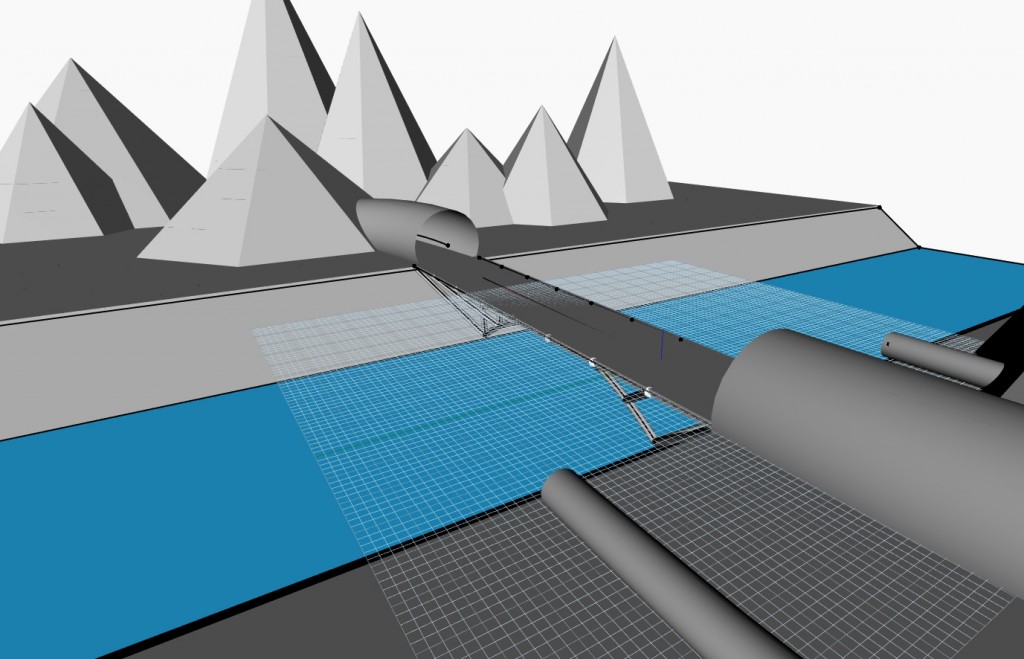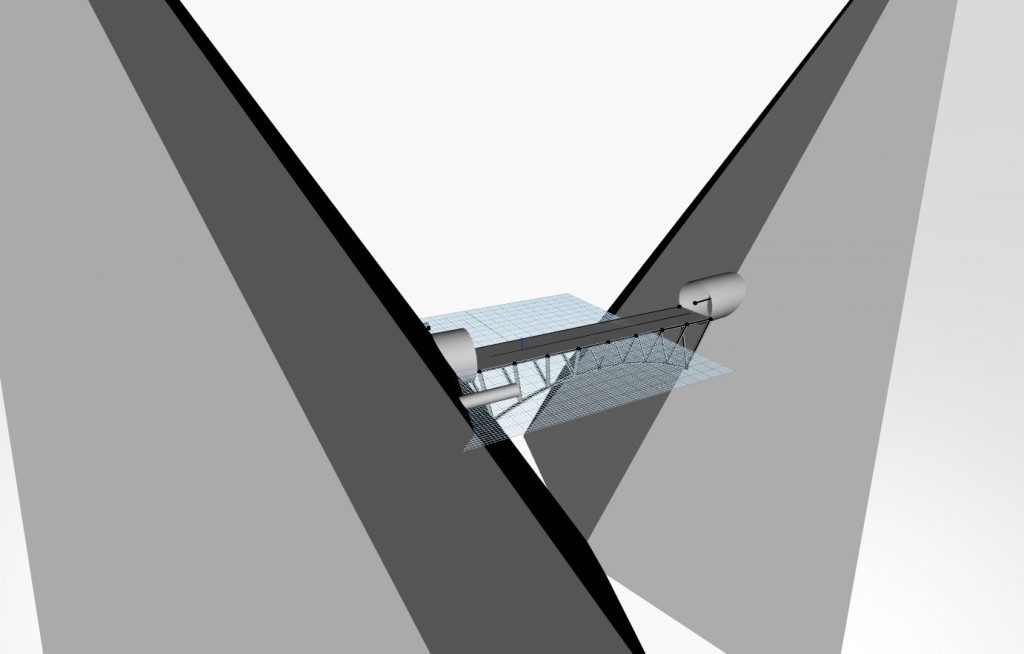Integrated Parametric Model
Integrated Infrastructure System: Two Tunnels and an Adaptive Bridge in an Mountainous landscape
The proposed concept describes a state-of-the-art, integrated transportation infrastructure system consisting of three key components: an optimized construction tunnel, an adaptive bridge, and a safety-focused tunnel. This system is designed to facilitate efficient, sustainable, and safe passage through a hilly terrain with varying geological conditions and across a river.
1. Construction Tunnel – Process Optimization and Stakeholder Management
The first tunnel runs through a hilly mountain range with complex geological formations. Its primary goal is to optimize construction methods and stakeholder coordination, ensuring a streamlined and efficient implementation. Key aspects include:
- Dynamic Geology Management: The tunnel crosses rock formations with rapidly changing geomechanical properties. Real-time geological monitoring and an adaptive excavation strategy are essential to detect and respond to unforeseen ground changes.
- Optimized Construction Methods: Advanced tunneling techniques, such as tunnel boring machines (TBMs), enable rapid adaptation of excavation parameters, improving efficiency and reducing delays.
- Stakeholder Management: Effective coordination between engineers, environmental agencies, and government authorities ensures smoother planning, cost control, and risk mitigation throughout the project
2. Safety Tunnel – Automated Evacuation and Emergency Systems
The second tunnel passes through another mountainous region and focuses on advanced safety engineering. The primary objective is to integrate automated evacuation routes and emergency response mechanisms that dynamically adjust to the terrain:
- Flexible Route Design: The tunnel’s alignment is designed to adapt to the complex topography of the mountain range. By incorporating real-time geotechnical analysis, the route can be optimized to avoid unstable formations and high-risk areas, ensuring both safety and longevity.
- Resilience Against Natural Hazards: Seismic monitoring and geotechnical simulations ensure the tunnel can withstand earthquakes, landslides, and extreme weather events, providing a high level of safety for users.
3. Adaptive Bridge – Flexibility and Environmental Integration
The bridge connects the two tunnel sections and spans a river with fluctuating width and hydrological conditions. The design emphasizes adaptability and resilience:
- Automated Structural Adjustment: The bridge is directly linked to the tunnel entrances and roadway, ensuring a precise and well-fitted connection. If the tunnel alignment or road gradient changes due to construction conditions, the bridge can automatically adjust its length, height, or angle to maintain a smooth and structurally sound transition.
- Adaptability to Environmental Conditions: The bridge is designed to respond dynamically to changes in river width, sediment displacement, and erosion. Through integrated sensors and monitoring systems, the structure can modify its supports and expansion joints to accommodate shifts in the landscape.
- Seamless Connection with Tunnels and Roads: The bridge’s endpoints are dynamically adjusted to ensure a perfect match with the tunnel openings and roadway system. This reduces structural stress, minimizes gaps, and enhances long-term durability.
Conclusion
This integrated system sets new benchmarks for tunnel and bridge construction in challenging topographical and geological environments. While the first tunnel focuses on construction efficiency and stakeholder management, the adaptive bridge serves as a dynamic link that responds to environmental changes. The second tunnel prioritizes safety, incorporating automated evacuation strategies and a cutting-edge emergency response system. Together, these elements form a highly efficient, sustainable, and secure infrastructure solution that balances technical innovation with economic feasibility.
Click below for integrated Parametric design file:
integrated-parametric-file
Alternative parametric Model Design
Optimized Infrastructure System: Two Tunnels and a Valley-Spanning Bridge
This alternative design presents a streamlined infrastructure system consisting of two tunnels and a bridge that spans a valley. The bridge is adapted to the surrounding mountains, ensuring a seamless connection between the tunnels while maintaining structural flexibility and safety.
1. Construction Tunnel – Process Optimization and Adaptability
- Designed to efficiently traverse varying geological conditions within the mountainous terrain.
- Real-time geotechnical monitoring ensures the tunnel adapts dynamically to rock formations.
- Advanced excavation techniques optimize construction speed and reduce unforeseen disruptions.
2. Adaptive Bridge – Seamless Valley Integration
- The bridge is designed to fit the valley’s natural contours, ensuring structural efficiency.
- Automatically aligns with the tunnels and road system for a smooth transition.
- Uses high-durability materials to withstand climate impacts and minimize maintenance.
3. Safety Tunnel – Automated Evacuation and Emergency Systems
- Includes dedicated evacuation tunnels that automatically adapt to the mountainous terrain.
- Optimized emergency exits ensure rapid access in case of incidents.
- Structural resilience ensures protection against seismic activity, landslides, and extreme weather.
Conclusion
This alternative solution balances efficiency and adaptability, providing a safe and resilient infrastructure system. The valley-spanning bridge seamlessly connects both tunnels, while the construction and safety elements ensure a robust and sustainable design with an advanced evacuation and emergency response system.
Click below for integrated Parametric design file:
integrative-parametric-alternative-design-file
Introduction|Individual Systems|Integrated Engineering Context|Integrated Ontology|Integrated Parametric Model|Group Members

